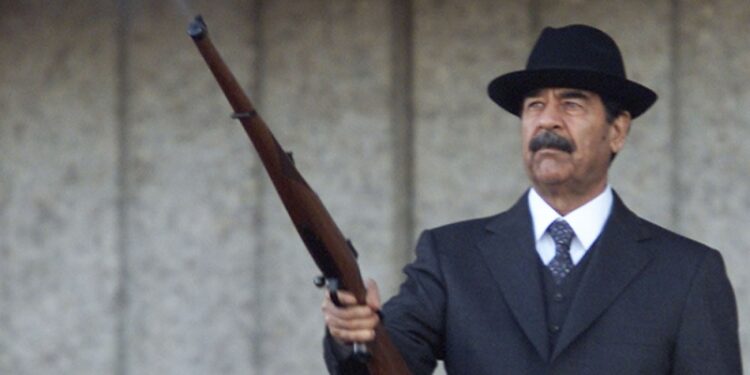
The former head of Saudi intelligence, Prince Turki Al-Faisal, spoke about the Saudi-Syrian-Iranian alliance to oust former Iraqi President Saddam Hussein from power, after his invasion of Kuwait.
In an interview with the Kuwaiti newspaper, Al-Qabas, Al-Faisal said, “There were meetings between representatives of the Saudi General Intelligence and its Iranian and Syrian counterparts, to support the Iraqi opposition at that time, and that was during the period of the Iraqi occupation of Kuwait and even after liberation.”
He added, “It was being held in Damascus, given the relationship that Hafez al-Assad had with Iran, in addition to the presence of many Iraqi opponents in Syria, and they organized their first conference in Damascus after Iraq invaded Kuwait.”
He continued: “All Iraqi factions that were at the forefront, whether present in Syria, Iran or Europe, were invited in coordination with the Syrian authorities, and some of them were refugees in the Kingdom, and others in Egypt, and all of them gathered in Damascus to declare an agreement to appear as legitimate opposition to Saddam’s regime”.
He stressed that the agreement was reached and they went to Beirut and the union was announced among them, and there was a representative of the Iranian intelligence in these meetings, in which opponents of all sects participated, Sunnis, Shiites, Kurds and others.
“After that, the Iraqi opposition came to the kingdom and communicated with it, and we were dealing with all Iraqi sects at that time, and meetings were arranged for them with the Kuwaiti leadership, and the Kuwaiti intelligence services were active in communicating with the Iraqi opposition,” he added.
Iraq, headed by the late Saddam Hussein, invaded the State of Kuwait and occupied it for 7 months, starting in August 1990, before the Iraqi forces left under the weight of an international military campaign.
Former Iraqi President Saddam Hussein was executed on December 30, 2006, which coincided with the first day of Eid al-Adha, which sparked widespread anger, especially because of the timing of the execution.
Later, Saudi Arabia supported the American invasion of Iraq in 2003, and the overthrow of the regime of the late Iraqi President Saddam Hussein, leaving the country moving towards the unknown, especially the provinces that represent its Sunni Arab extension.
Perhaps what has reopened these pages of history are the posts and tweets of social media users, who emphasized that the Gulf countries, led by Saudi Arabia, supported the occupation of the Iraq.
When it was announced that Saddam’s regime was toppled, Saudi Arabia did not have any strategic vision to deal with the future of the country, and what is evidenced by the statements of the Saudi Defense Minister at the time, Sultan bin Abdulaziz.
The Saudi minister said, during a press conference with his US counterpart, Donald Rumsfeld, in Riyadh, on April 29, 2003: “I do not imagine that Iran threatens Iraq,” expressing his belief that “Iraq does not tend to integrate into any other country.”
The newspaper “Asharq Al-Awsat” quoted Prince Sultan, in the same press conference, as saying that “the survival of the American forces that participated in monitoring the no-fly zone in southern Iraq has become unnecessary.”